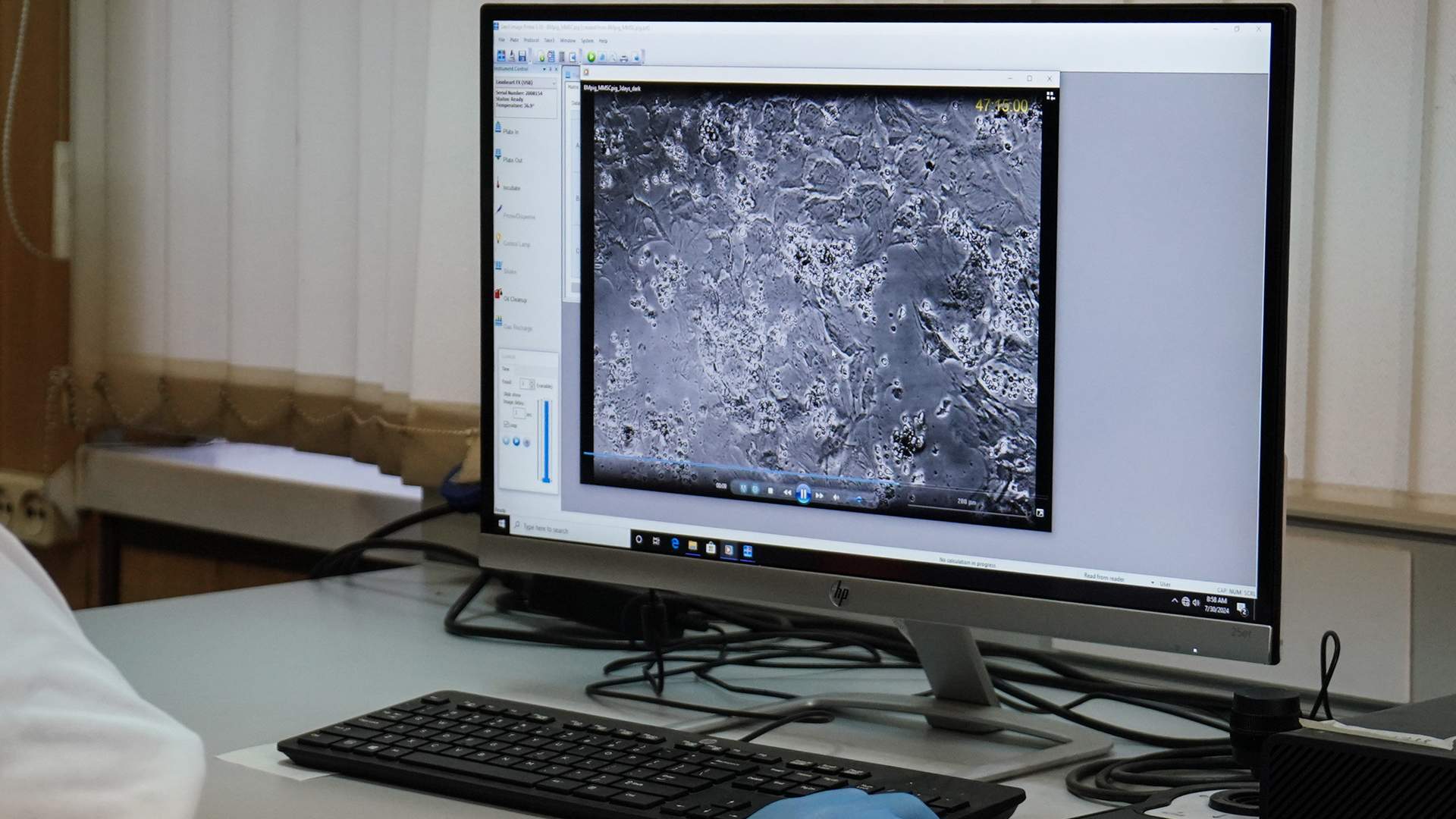- Статьи
- Science and technology
- Radiation rate: a special test will determine the sensitivity of cancer patients to proton therapy
Radiation rate: a special test will determine the sensitivity of cancer patients to proton therapy

Russian specialists are conducting clinical trials of a new test system that makes it possible to evaluate the effectiveness of therapy with heavy particles - protons and neutrons — for cancerous tumors in the head and neck before starting treatment. According to oncologists, about half of patients do not get the desired result after these types of exposure to diseased tissues. At the same time, the quota for such therapy is limited, and its cost for one person is about 3.5 million rubles. Scientists propose to create models from the patient's tumor cells and expose them to radiation, which will help save time and money. According to doctors, the development of such a tool is extremely relevant now.
How is the effectiveness of proton and neutron therapy evaluated?
RUDN University specialists, together with colleagues from the National Research Medical Center of Radiology, have developed a test system that allows evaluating the effectiveness of proton and neutron therapy in patients with breast and neck cancer before it begins. Currently, this type of treatment brings the desired result only in half of cases. At the same time, its cost is about 3.5 million rubles per person, and the quota for it is limited. The developers have already started clinical trials of their technique. Now they are expanding the sample of its participants. The creators hope to receive a registration certificate for the technology next year.
— A limited number of quotas are allocated for the entire country for the treatment of cancer with heavy particles. This type of high-tech medical care is indicated for patients with head and neck cancer, but according to oncologists, it is ineffective in about 50% of cases. We suggested using a biopsy to take the tissue surrounding the tumor from the patient, make a cellular model of the neoplasm based on it, and irradiate it with protons or neutrons, thus evaluating the effectiveness of treatment. If it is ineffective, then we do not recommend this therapy and another one is selected for the person. This saves the patient's time and costs," said Timur Fatkhudinov, director of the RUDN University Research Institute of Molecular and Cellular Medicine.
Proton therapy is a type of radiation therapy that is used to fight cancerous tumors. It uses proton beams to destroy diseased cells, which are produced by accelerating proton—hydrogen nuclei. They can be configured in such a way that they affect the pathological focus in the tissue at the desired depth. Due to this, it is possible to achieve targeted action, that is, the destruction of diseased cells, minimally affecting healthy ones. It is used for tumors in the head and neck, central nervous system and others.
Neutron therapy is a type of radiation therapy that uses a reaction between radiosensitive drugs previously delivered to the tumor and neutrons. It is used to fight cancer of the brain, lungs, liver and others.
The effectiveness of treatment is assessed by measuring changes in the expression of three genes that doctors have identified during research. In order to understand how their activity is related to the results of treatment, doctors observed patients after therapy. They took into account when patients relapsed, how they tolerated sessions, whether the tumor focus increased or decreased, and other indicators.
The technique consists of several stages of laboratory work. First, the biopsy tissue is divided into cells. They are then placed in the patient's blood plasma and thus create a three-dimensional model of the tumor tissue. As a result, it will fall under the beam of protons or neutrons, the dose of which is calculated using special mathematical models. Such studies can be carried out in all three centers where andron therapy is conducted in our country. They are located in Tomsk, Obninsk and Chelyabinsk.
Who needs a new development
In the future, the developers intend to expand the technique to other types of tumors. To do this, they need to find genetic markers for each type of malignancy, which can be used to draw conclusions.
— Neutron and proton therapy are among the most promising and advanced methods of treating oncological diseases, therefore, the development of test systems that determine sensitivity to this type of exposure to malignant tumors is certainly very relevant. At the same time, successful experiments should be followed by in-depth research that will determine the actual effectiveness and applicability of test systems," said Oleg Kaganov, Head of the Department of Oncology at SamSMU, Chief Physician of the Samara Regional Clinical Oncology Dispensary.
As oncologist Mikhail Laskov explained to Izvestia, there are currently no ways to pre-evaluate the results of treatment with heavy particles. It is only known that a number of tumors are sensitive to such effects, and individual sensitivity is not determined.
— If we have such a tool, then it can only be welcomed. Creating a test system is a very urgent task. However, the accuracy of such forecasts needs to be proven in a sufficient sample of patients," the specialist said.
There are similar systems in the world for evaluating the effectiveness of chemotherapy. However, this is the first time that a technology for predicting the possibilities of treatment with heavy particles has been created.
Переведено сервисом «Яндекс Переводчик»





